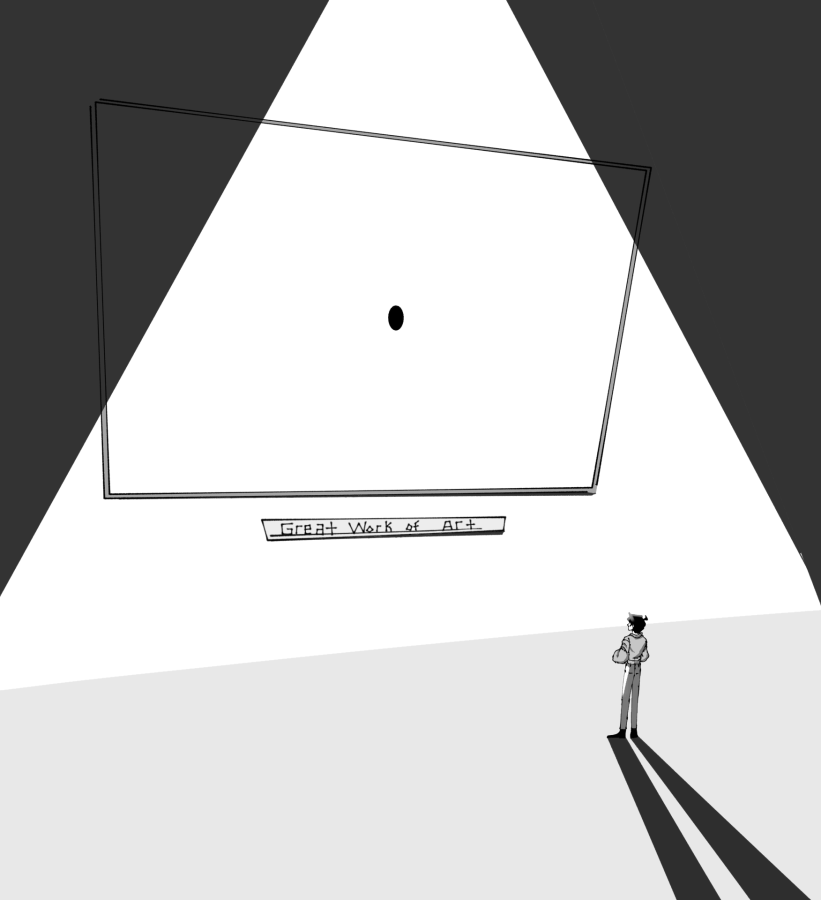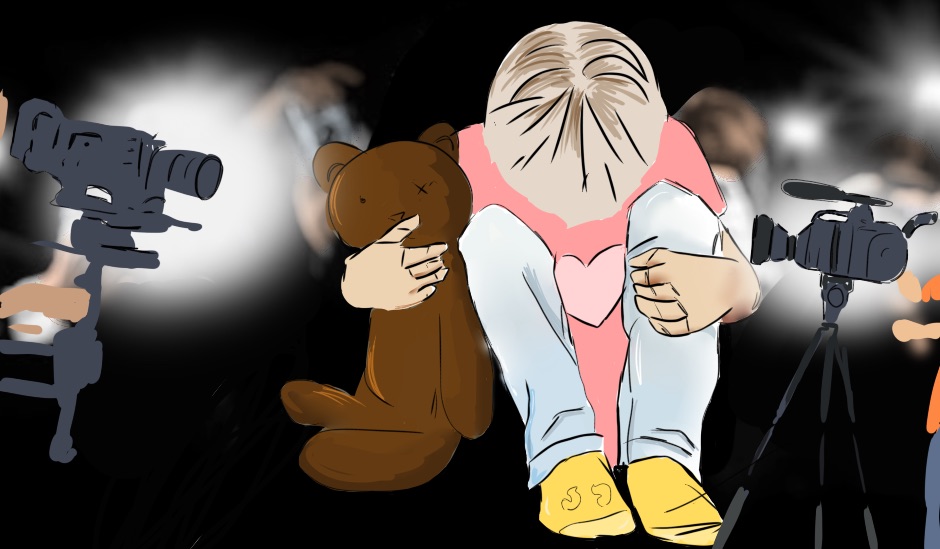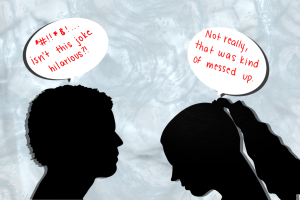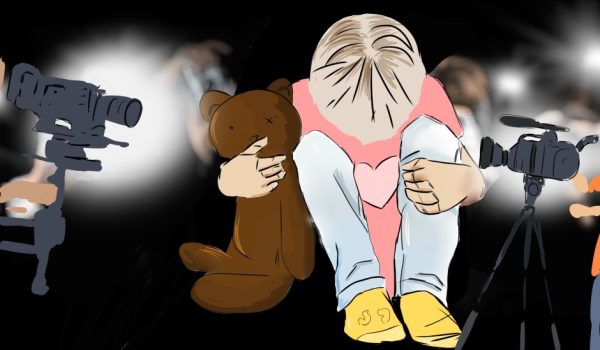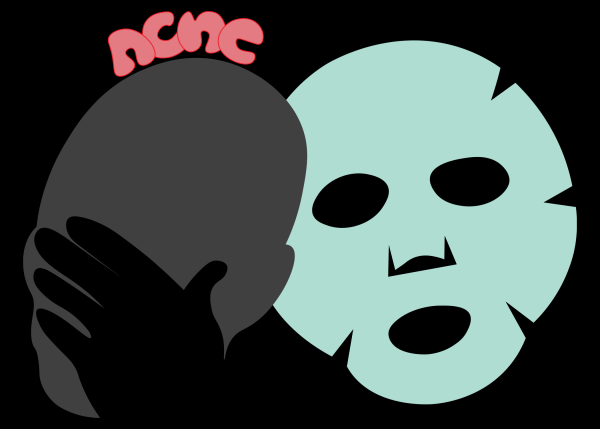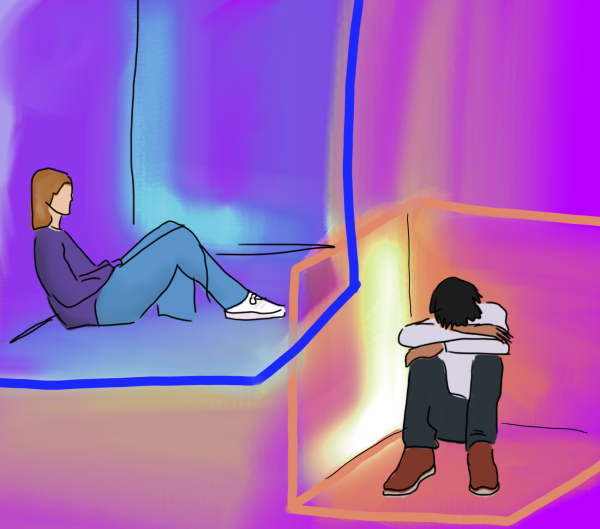[Opinion] The subjectivity of art allows for people’s own opinions
Art is subjective and we should allow others to tell their own interpretation.
April 18, 2023
Art can be anything created from the imagination and creativity of a human in a form such as painting, sculpture, music, writing, film and fashion. Creating is one quality of being human, not a necessity, but to be able to express yourself through something tangible from your mind is a gift in itself. Thoughts and ideas can be spread from person to person just from a glance at a piece that was made.
Different interpretations and views allow for things that may not have been thought about before, but also allow for a viewer to take something that an artist chooses to show the world and make a meaning of it for themselves. The allowance for interpretation allows another person to add a personal significance and appreciation for the art they may consume.
Subjectivity can be explained as the feature of being based on or swayed by individual thoughts and opinions. Putting your work out there exposes it to be seen and interpreted by a wide range of people, all with different backgrounds and beliefs.
A person could add a meaning to the specific thing that you may not have ever intended, which can be influenced by their past experiences and opinions, resulting in their overall thoughts on what they see. However, the subjectivity of art also allows for a person to express their dislike for a piece, a factor not everyone appreciates.
Many reasons can explain why a person may choose whether they like the art or not. For the viewer, it can be outside factors, like the people and events around them, or internal factors, like their beliefs and views. Though, other factors can also be from the qualities of the work itself.
Visuals are a significant part of art. It’s the first thing people will notice, and is a deciding factor of what grabs their attention. Bright colors or an interesting design can allow the eyes to be drawn to a specific thing and make the viewer want to examine more about it. Some examples of these interesting visuals can be found in paintings, fashion, and movies.
The elements of a painting visually plays an important role in a person’s opinion. How well the visuals are able to communicate what the artist is trying to show helps determine how they may feel about the piece. That is why looks are so important for a painting. The artist shouldn’t be the one having to verbally explain the piece, but rather their work should communicate it visually and allow the viewer to interpret it. This reasoning is why art is so subjective and why visuals are a key part of it.
How clothing looks as well is important to a person’s opinion on it. The shapes, colors, and fabric all play a vital role as to why fashion may work or not. Sometimes, especially for fashion runways, designers specifically create pieces for spectacle. The abstract pieces can work great for a lasting impression, however they can also completely confuse people as to the reason for their existence. What is the purpose of a piece of clothing if it isn’t practical or wearable? How people view fashion’s purpose with how it looks affects how well received it may be.
The last example for visuals showing the subjectivity of art is recent animated movies. There’s been a recent surge of animated movies that have created unique art styles for themselves. The most notable being “Spiderman: Into the Spiderverse.” Other movies with notable pushes of the boundaries of animation is “Puss in Boots: The Last Wish,” “The Mitchells vs The Machines,” and the soon to come “Spiderman: Across the Spiderverse” and “Teenage Mutant Ninja Turtles: Mutant Mayhem.”
These animated movies all have a unique art style that allow them to stand out visually. However, just like other pieces of art, these styles can also be disliked by the people who watch them.
While how art appears plays a key role in why people may love it or not, the message behind the piece can also be shown through the visuals, which also affects how it may be received.
“I do think the message of a person’s work influences their opinion. Sometimes some background information can open up a completely new way of viewing and understanding a piece of art,” freshman Aditi Sawant said.
It is essential in drawings and paintings for visuals to communicate the message that is trying to be sent. Usually, there are little to no words incorporated into those types of art, which require the feeling or idea to be expressed through other forms.
“Painters are masters of effects and illusion, who use their characters’ expressions to convey certain messages that go beyond emotions,” Beaux Art Magazine writer Malika Bauwens wrote in an editorial titled, “The Art of Capturing Our Attention” on Google Arts & Culture.
Other forms of art don’t include characters to express a message. Abstract art, for example, can use shapes and colors for interpretations. Abstract art can be extremely complicated to very simple, communicating a complex idea or just wanting to show something far from reality. Even so, people have a lot of issues with abstract art.
There are some artists that abuse abstract art’s simplicity, choosing to just make an art piece without any meaning and just for financial gain. There are art pieces that have sold for huge amounts of money that could just be a shape or block of color on a canvas with no intention behind them, which some people get upset about. Though, that is just the subjectivity of art, people appreciate different artworks differently depending on what they prefer.
“I think it is a cool way to express yourself. But I also find people taking abstract to their advantage by creating something that doesn’t mean anything,” sophomore Adinda Firman said.
Other mediums of art express their messages differently. Music through the lyrics, and movies and writing through their stories. Even fashion can have its messages displayed through visuals just like art.
An instance for this can be from designer Beate Karlsson. In 2023, two of her collections surprised audiences on the runway. In one for Spring/Summer, models purposely tripped and fell on the runway, and for Summer/Winter, the pieces of clothing fell off and “broke.” This was all done on purpose of course, but the message behind the events can add an appreciation for the collections.
Karlsson told HypeBeast in an article written by Eric Brain that the intention behind the acts was to show an idea about shame and embarrassment and pairing it with luxury fashion. Even so, the interpretation of art allows people to think about this in other ways, and create a message for themselves.
“With this in mind, the designer commented on the ‘superficiality of fashion.’ However, as the show continues to go viral on TikTok, many commentators and fans of the brand are looking into how AVAVAV has dissected the problematic industry that is fast fashion,” Brain said.
While messages and looks do play an important role in subjectivity, some things can all just come down to personal taste. People have their preferences whether they admit to them or not. Different styles attract different people, whether it be genres with music or movies, or types of fashion.
“Fashion and art are all up to personal preference. I have a few styles of both drawing and dressing that I like to switch between every now and then. If something doesn’t fit into that range of preference, I may not find it as appealing as a piece of art or clothing that would,” Sawant said.
The subjectivity of art enables people to praise and explain why they love a piece, but also allows them to express their dislike for it. Though, when these views are said there are some who could take their disapproval of others’ opinion to an extreme. Constant berating or even harm can be done if a person like this sees fit.
There can also be a lot of other issues with subjectivity, such as people’s opinions being based around popularity or the person the work comes from. Subjectivity plays into free speech, but doesn’t eliminate the actions of others’ responses to it.
At the end of the day, art gives a form of expression to artists and a voice to the viewers and consumers of it. The subjectivity of it grants the space for many opinions from different places and backgrounds to be able to share and add to the conversation of a work. There is never one way to interpret a piece of work and maybe the different views can add a whole new meaning that wasn’t there before.

